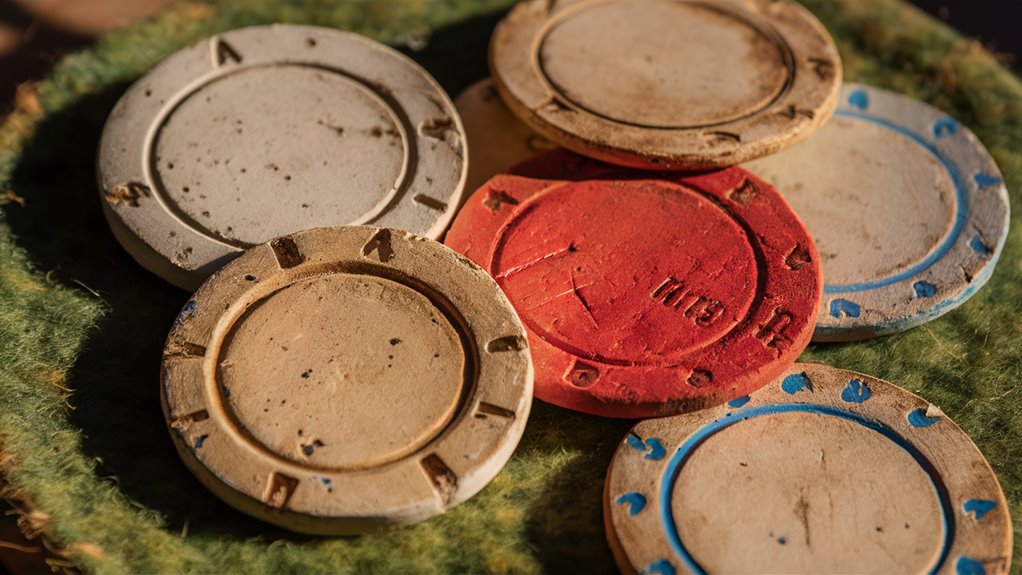
Growth of Casino Chips: The Money in Gaming

The Start of Casino Chips
In the late 1800s, casinos took a big step by bringing in marked chips to use in place of cash. The first chips were made from clay, ivory, and bone and laid the groundwork for the gaming money we see today.
Major Advances in Chip Creation
A big shift happened with Scarne Manufacturing expert analysis developed compression-molded chips in the 1880s. This method produced chips that were durable and uniform, aiding casinos in operating smoothly.
Chip Colors Now
Today, casino chips use a known color code:
- White chips: $1
- Red chips: $5
- Blue chips: $10
- Green chips: $25
- Black chips: $100
New Security in Chips
Modern chips include advanced security features like:
- RFID tracking systems
- UV markings for verification
- Distinct edge patterns
- Small prints
- Center designs
Chips Today
Chips have evolved from simple pieces to high-tech tools. They merge classic aesthetics with new technology to create a secure, efficient system for today’s casinos.
Origins of the Tokens
A Look at the Start of Casino Tokens Over Time
Early Days of Gaming Chips
Back in the late 1800s, gambling places switched to using special tokens instead of real money. These first chips, made from materials like clay, ivory, and bone, had their unique markings which made it easy to identify their origins.
Key Changes in Token Production
The 1880s were pivotal as mass production transformed the gambling industry. Factories began producing clay composite chips in vast numbers, ensuring uniformity across different venues. Scarne Manufacturing led the way by making compression-molded clay chips with intricate inlays and edge spots. These chips were more secure and easier to authenticate.
Main Features of Early Tokens
- Custom center art
- Edge patterns
- Clay blends
- Anti-counterfeit measures
- Uniform betting pieces
Old Methods and Chip Creation
Traditional Methods of Crafting Casino Chips

Initial Materials and Methods
Clay molding and hand-cut bone were initially employed in the mid-1800s for creating chips. Early casinos used simple round clay molds for basic gambling tokens, which featured simple designs and distinct markings.
Improved Compositions Arrive
In the 1870s, superior materials like clay-shellac composites made chips more durable through pressure molding techniques. This innovation allowed for enhanced designs while maintaining consistent size and weight.
New Materials and Enhanced Methods
A significant shift happened in the 1880s when early forms of 온카스터디 plastic replaced ivory and bone. This material allowed manufacturers to incorporate colors and markings directly into the chip.
The Importance of Colors in Games
Role of Colors in Casino Games
Evolution of Chip Colors
Chip design greatly improved in the early 1900s, introducing a standardized color sequence that transformed gaming money.
Colors for Higher Values
High-value chips employ specific colors to denote their value. The green $25 chip is tied to notions of money, while black $100 chips convey a serious, upscale feel.
Strategic Use of Colors
Casinos strategically use colors to influence player behavior and emotions. Vibrant red stirs excitement and risk-taking, while cool blue encourages thoughtful, strategic play.

